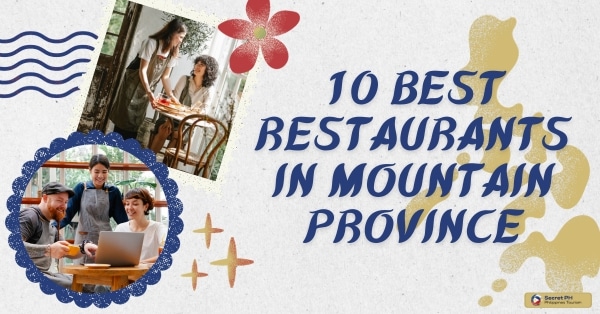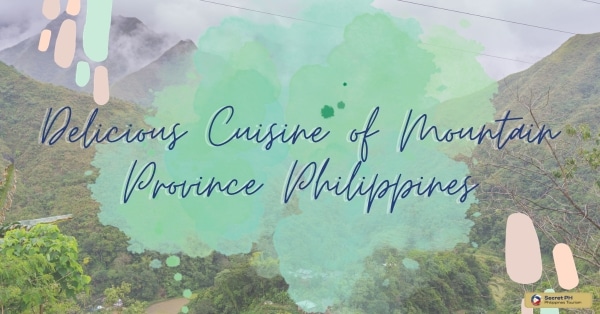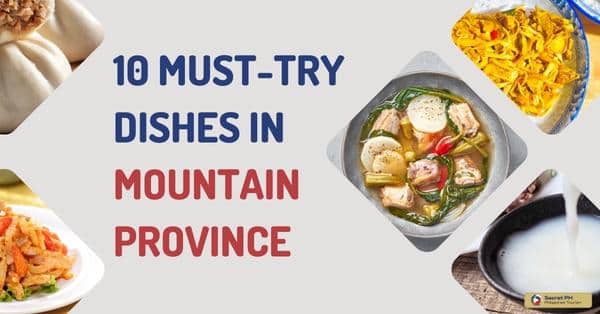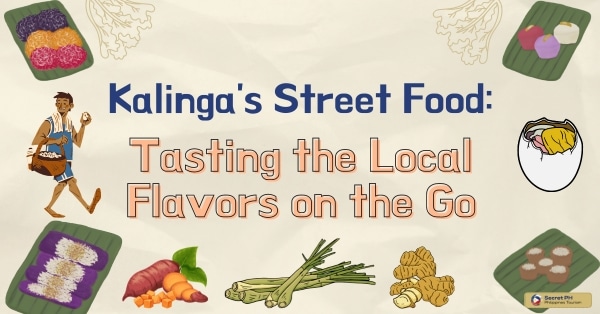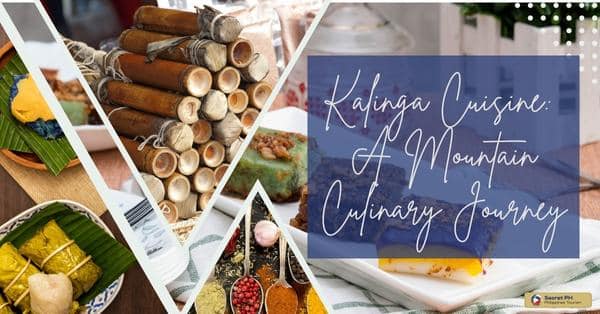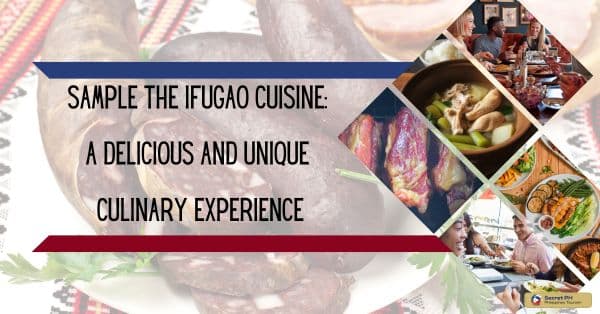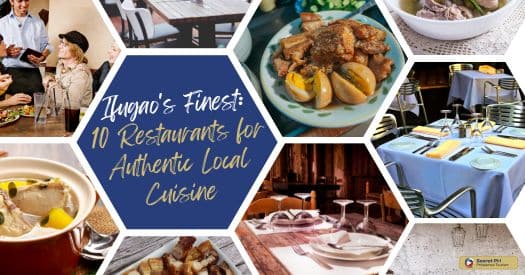Explore Kalinga’s culinary treasures, where tradition meets innovation. This region boasts a unique blend of indigenous ingredients, elevating its flavors. Traditional cooking techniques, cherished through time, infuse authenticity into every dish. Discover the roots and evolution of Kalinga’s culinary artistry and immerse yourself in the vibrant local food festivals that celebrate this rich heritage.
In this blog post, we explore the roots of Kalinga’s culinary history, as well as some must-try dishes and delicacies from this region. We also take a look at the various influences and inspirations that have shaped Kalinga’s culinary evolution over the years.
Finally, we highlight some of the local food festivals and celebrations held to celebrate the unique flavors of Kalinga. So whether you’re looking for an authentic regional cuisine experience or just want to try something new, Kalinga has something for everyone!
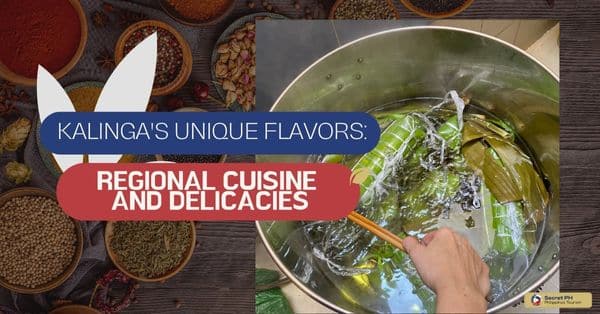
Kalinga’s Culinary Heritage
Kalinga’s culinary heritage is a treasure trove of rich indigenous traditions that have been preserved for centuries. Unaffected by Western colonization, Kalinga-Apayao cuisine showcases unique flavors and cooking techniques.
From the ancient practice of cooking rice inside bamboo to the use of traditional spices and ingredients, such as linudag and flavorful herbs, Kalinga’s culinary traditions reflect the cultural identity of the region. Exploring Kalinga’s culinary offerings provides not only a gastronomic adventure but also an opportunity to appreciate the warm hospitality and cultural richness of the Kalinga people.
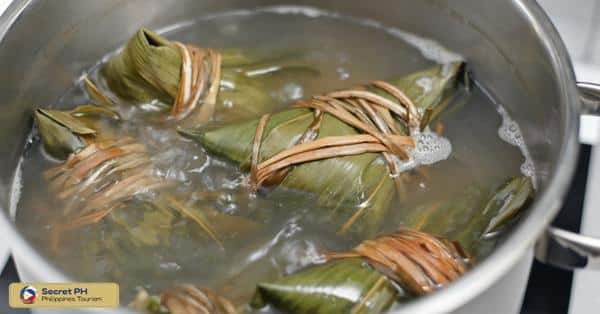
Indigenous Ingredients: Key Components of Kalinga Flavors
Kalinga’s culinary heritage is deeply rooted in its indigenous ingredients. These unique components contribute to the distinct and vibrant flavors found in Kalinga cuisine. From aromatic herbs to locally sourced produce, Kalinga’s indigenous ingredients are a testament to the region’s rich biodiversity and cultural identity.
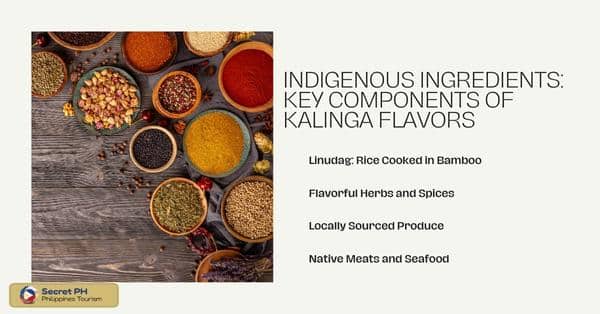
Linudag: Rice Cooked in Bamboo
One of the most iconic culinary practices in Kalinga is the cooking of rice inside bamboo, known as “linudag.” This traditional method infuses the rice with a smoky aroma and imparts a subtle earthy flavor. Linudag is not only a cooking technique but also a symbol of Kalinga’s sustainable approach to food preparation.
Flavorful Herbs and Spices
Kalinga cuisine is known for its use of flavorful herbs and spices that elevate the taste of dishes. Ingredients like ginger, garlic, turmeric, and lemongrass add depth and complexity to various recipes. These indigenous herbs not only enhance the flavors but also possess medicinal properties, making Kalinga cuisine a harmonious blend of taste and wellness.
Locally Sourced Produce
Kalinga’s fertile lands offer a bountiful variety of locally sourced produce that forms the foundation of many dishes. Fresh vegetables, such as taro leaves, fiddlehead ferns, and bamboo shoots, are staples in Kalinga cuisine. The use of these indigenous ingredients not only adds nutritional value but also celebrates the richness of the region’s agricultural heritage.
Native Meats and Seafood
Kalinga’s proximity to the Cordillera mountain range and nearby bodies of water provides access to native meats and seafood. Wild game meat, such as wild boar, deer, and river fish, is commonly used in traditional Kalinga recipes. These locally sourced proteins offer a unique and robust flavor profile that sets Kalinga cuisine apart.
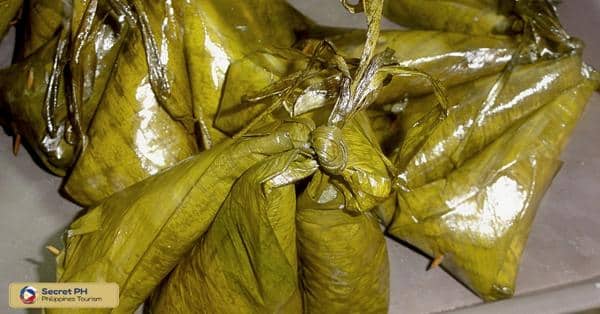
Traditional Cooking Methods and Techniques
Kalinga’s culinary heritage is a treasure trove of traditional cooking methods and techniques that have been passed down through generations. These techniques not only contribute to the unique flavors found in Kalinga cuisine but also reflect the region’s rich cultural identity.
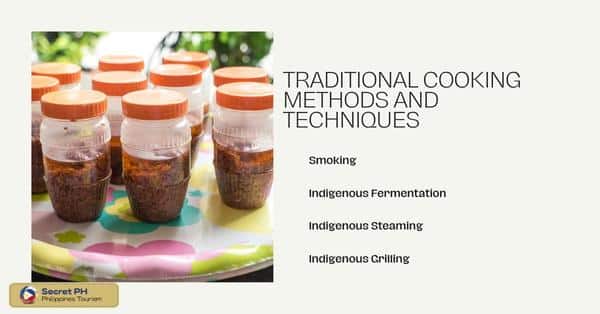
Smoking
Smoking is another traditional cooking method widely used in Kalinga. It involves exposing food, such as meat and fish, to smoke from burning wood or leaves. The smoke acts as a natural preservative while infusing the food with a unique smoky flavor. Etag, a popular delicacy made from smoked meat, is a testament to Kalinga’s mastery of this technique. The process of smoking not only enhances the flavors but also allows for the long-term preservation of food in Kalinga communities.
Indigenous Fermentation
Indigenous fermentation techniques play a crucial role in Kalinga’s culinary traditions. Fermentation is used to create a variety of condiments and ingredients that add complex flavors to dishes. Bagoong, a fermented fish sauce, and etag, fermented smoked meat, are prime examples of the skill and expertise required in the fermentation process. These ingredients not only contribute to the unique taste but also aid in food preservation, allowing Kalinga communities to enjoy their flavors all year round.
Indigenous Steaming
Steaming is a popular cooking technique used in Kalinga to preserve the nutrients and delicate flavors of ingredients. Vegetables, such as taro leaves, fiddlehead ferns, and bamboo shoots, are often steamed to retain their natural goodness. This gentle cooking method ensures that the vegetables maintain their vibrant colors, crisp textures, and distinct flavors, resulting in nutritious and appetizing dishes.
Indigenous Grilling
Grilling is a traditional cooking method that adds a distinct smoky flavor and charred texture to various ingredients in Kalinga cuisine. Meat, fish, and vegetables are carefully grilled over an open flame, enhancing their taste and imparting a delightful smoky aroma. The grilling technique used by the Kalinga community showcases their mastery of fire and heat control, resulting in perfectly cooked dishes that are both flavorful and visually appealing.
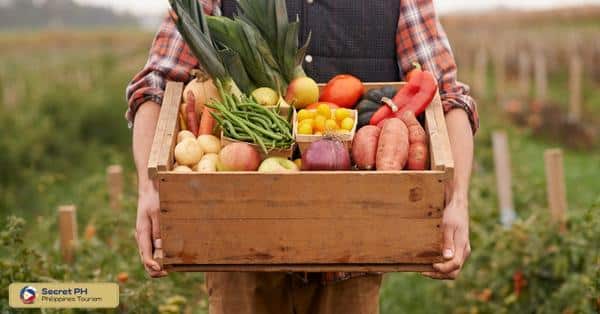
Must-Try Kalinga Dishes and Delicacies
Kalinga’s unique flavors are showcased in its regional cuisine, which is a treasure trove of must-try dishes and delicacies. Here are some must-try Kalinga dishes and delicacies that will take your taste buds on a culinary adventure:
Etag: Etag is a popular delicacy made from fermented and smoked meat, often sourced from wild game. The unique fermentation process gives the meat a distinct flavor and aroma, making it a standout dish in Kalinga cuisine.
Pinikpikan: Pinikpikan is a traditional chicken dish that involves a unique preparation method. The chicken is beaten with a stick prior to cooking, resulting in tender and flavorful meat. It is often served with vegetables and a flavorful broth.
Binungor: Binungor is a shellfish delicacy that can warm you up in the chilly mountainous province of Kalinga. This native dish is known for its rich and savory flavors, making it a favorite among locals and visitors alike.
Pinuneg: Pinuneg is a type of blood sausage made from freshly slaughtered pig’s blood mixed with rice and spices. It is then stuffed into natural casings and cooked to perfection. This delicacy exemplifies Kalinga’s unique approach to utilizing every part of the animal in their cuisine.
Inanchila: Inanchila is a sour soup dish made from freshwater fish, vegetables, and indigenous souring agents like batwan or bilimbi fruit. The combination of tangy flavors and fresh ingredients makes this dish a delightful culinary experience.
Linapet: Linapet is a traditional Kalinga dessert made from glutinous rice cooked in coconut milk. It is sweetened with sugar or palm syrup and usually served wrapped in banana leaves. This indulgent treat showcases the use of local ingredients in Kalinga’s dessert offerings.

Influences and Inspirations: Kalinga’s Culinary Evolution
Kalinga’s culinary evolution has been shaped by a diverse range of influences and inspirations. From its indigenous roots to the cultural exchanges with neighboring regions, Kalinga’s cuisine reflects a tapestry of flavors and techniques. The region’s culinary journey has been influenced by its geographical location, resulting in a fusion of mountainous flavors, riverine ingredients, and coastal influences.
Additionally, historical interactions with neighboring communities have contributed to the evolution of Kalinga’s gastronomy, with influences from the Ilocanos, Igorots, and even Chinese and Spanish cuisines. Kalinga’s culinary landscape is a testament to the region’s ability to adapt, innovate, and embrace new flavors while preserving its rich cultural heritage.
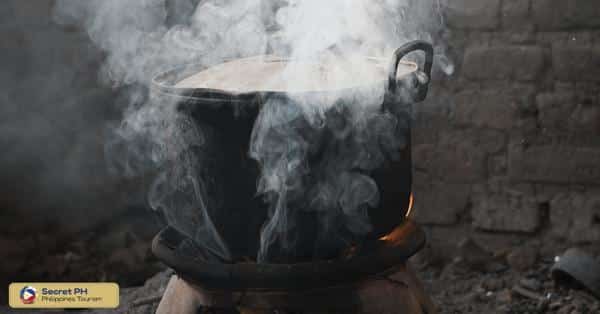
Local Food Festivals and Celebrations
Here are some of the local food festivals and celebrations held in Kalinga:
1. Inandila Festival in Naneng– Held every May in Naneng, Tabuk City. Inandila is a traditional Kalinga rice cake made with glutinous rice, coconut milk, and sugar. The festival features a rice cake-making contest, as well as a variety of other activities, such as traditional dances and games.
2. Awayaw Festival in Tinglayan– Held every February in Tinglayan, Kalinga. Awayaw is a traditional Kalinga dance that celebrates the harvest season. The festival features performances of the awayaw dance, as well as a variety of other activities, such as food tasting and cultural presentations.
3. Slow Food Festival in Pasil– Held every December 10 in Pasil, Kalinga. It is a celebration of the municipality’s commitment to sustainable agriculture and food preservation. Visitors can learn about the different heirloom crops grown in Pasil and taste traditional dishes made with these crops.
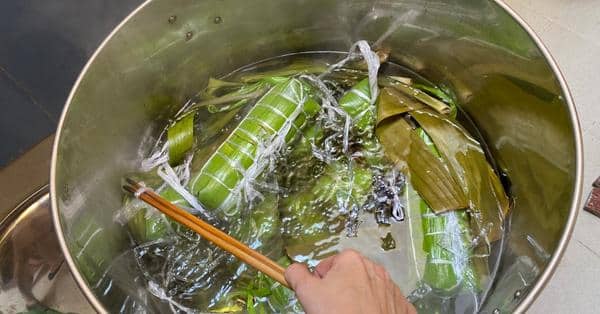
In conclusion
Kalinga’s unique flavors are a testament to its rich culinary heritage and cultural identity. From indigenous ingredients to traditional cooking methods, Kalinga’s regional cuisine offers a unique gastronomic adventure that celebrates the region’s biodiversity and sustainability practices.
Whether you’re looking for an authentic culinary experience or just want to explore new flavors, you can find it in the vibrant local food festivals and celebrations held in Kalinga. For an unforgettable journey of taste, look no further than Kalinga’s culinary heritage.

